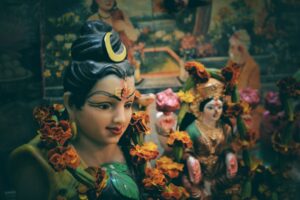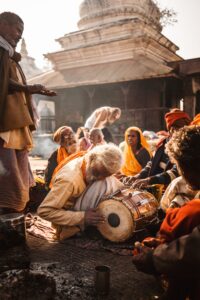Kanwar Mela is an annual pilgrimage and religious festival celebrated in India, dedicated to Lord Shiva. The Mela attracts millions of devotees, known as Kanwariyas, who undertake a spiritual journey to the holy city of Haridwar to fetch sacred waters from the Ganges River. This article delves into the historical significance, cultural importance, and the deep-rooted devotion to Lord Shiva that characterizes the Kanwar Mela in Haridwar.
The Origins and Significance of Kanwar Mela:
Kanwar Mela has ancient roots and finds its mention in Hindu scriptures and mythology. It is believed that during the Samudra Manthan (churning of the ocean) by the Devas and Asuras, drops of the elixir of immortality fell at four sacred locations in India, one of which is Haridwar. The Kanwar Mela marks the commemoration of this event and the devotion of Lord Shiva’s devotees who gather to seek blessings and purify themselves with the holy Ganges water.
The Rituals and Traditions:
The Kanwar Yatra, a significant part of the Mela, involves devotees carrying ornately decorated poles with water pots suspended on either end, known as Kanwars, on their shoulders. They travel on foot to the Ganges in Haridwar and fill their Kanwars with the sacred water. The yatra is marked by rigorous fasting, prayers, and chanting of “Bol Bam” hymns, expressing their devotion to Lord Shiva. The Kanwariyas often cover hundreds of kilometers, traversing difficult terrains, as a demonstration of their unwavering faith.

Devotion to Lord Shiva:
Lord Shiva holds a special place in Hindu mythology as the supreme god, embodying destruction and regeneration. The Kanwar Mela serves as a testament to the deep reverence and devotion that millions of Hindus have for Lord Shiva. It provides an opportunity for spiritual introspection, self-discipline, and a sense of unity among devotees who come from diverse backgrounds and regions.
The Transformation of Haridwar during Kanwar Mela:
Haridwar, nestled along the banks of the sacred Ganges River, undergoes a profound transformation during the Kanwar Mela. The city comes alive with colorful processions, religious rituals, and cultural events. The influx of devotees from various parts of the country creates a vibrant atmosphere of spirituality and festivity. The local economy also gets a significant boost during the Mela, with businesses catering to the needs of the pilgrims.

Challenges and Management:
The massive congregation of pilgrims during the Kanwar Mela poses various logistical and security challenges. Authorities work diligently to ensure the smooth conduct of the event and to manage the crowds. Adequate arrangements for sanitation, medical facilities, and traffic management are put in place to prevent any untoward incidents. The involvement of the local administration and cooperation from the devotees play a crucial role in maintaining order and safety during the Mela.
Social and Cultural Impact:
The Kanwar Mela in Haridwar goes beyond religious significance; it also has significant social and cultural implications. It fosters a sense of unity and brotherhood among people from different regions and backgrounds, transcending social barriers. The Mela showcases India’s rich cultural heritage through various cultural programs, folk music, and traditional art forms.
The Kanwar Mela in Haridwar stands as a grand spectacle of devotion, faith, and cultural heritage. It exemplifies the unwavering belief of millions of devotees in Lord Shiva and serves as a reminder of the importance of spiritual connection and unity. The Mela brings together people from all walks of life, celebrating the timeless tradition and reinforcing the values of devotion, self-discipline, and cultural diversity. It is a divine journey that leaves a lasting impact on the lives of those who participate, making it a truly remarkable and cherished experience.

